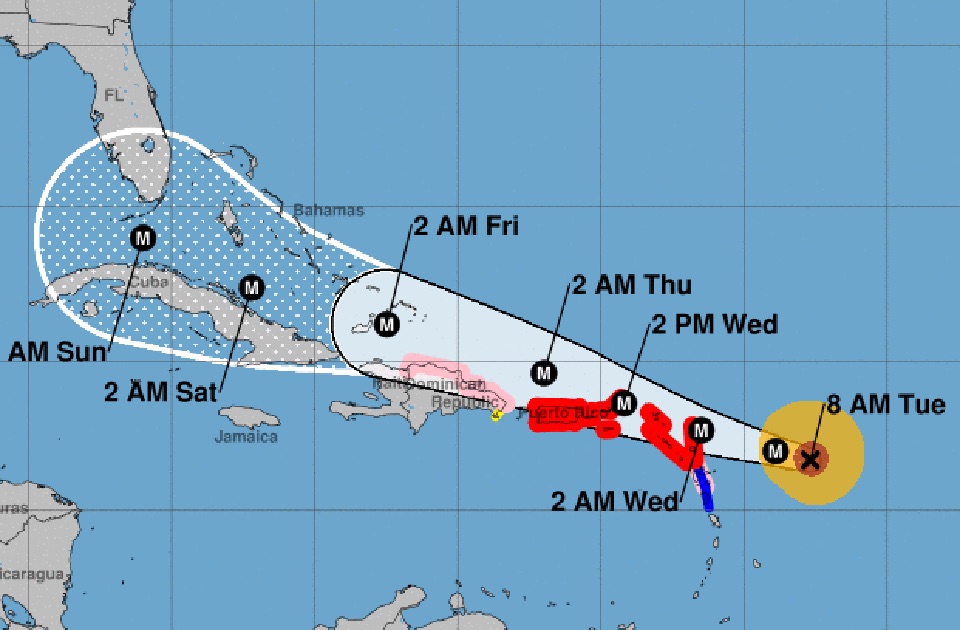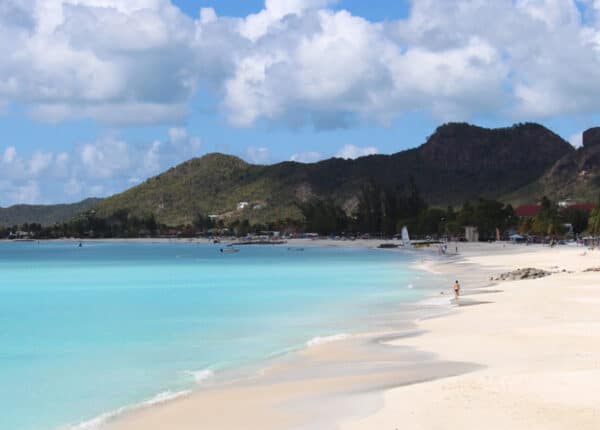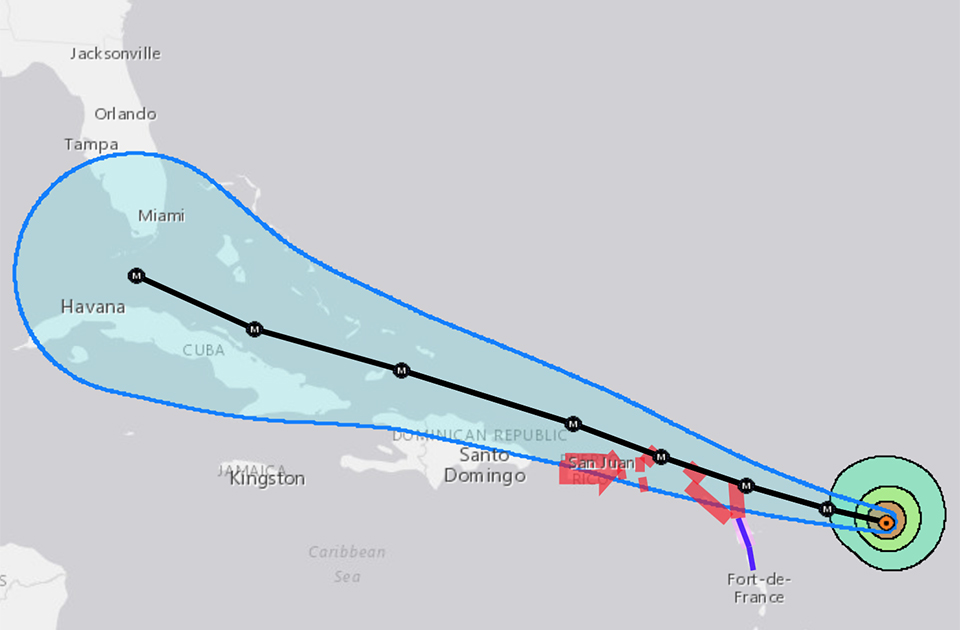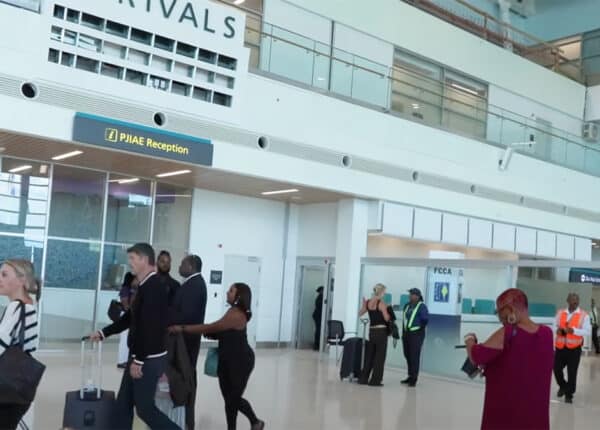By the Caribbean Journal staff
The now-Category 5 Hurricane Irma was set to make landfall in the Caribbean on Tuesday as islands across the northern Caribbean braced for impact.
The storm was about 270 miles east of Antigua at 8 AM on Tuesday, according to the latest tracking from the National Oceanic and Atmospheric Administration.
As of Tuesday morning, the eye of what the NOAA was calling the “extremely dangerous” Hurricane Irma was moving with maximum sustained winds near 175 mph with higher gusts, with additional strengthening forecast for the next 48 hours.

The center of the storm was set to move near or over portions of the northern Leeward Islands on Tuesday night and early Wednesday.
As such, a hurricane warning is now in effect for Antigua, Barbuda, Anguilla, Montserrat, St. Kitts, Nevis, Saba, St. Eustatius, St Maarten, St Martin, St Barth, the British Virgin Islands, the U.S. Virgin Islands, Puerto Rico, Vieques and Culebra.
A Hurricane Watch and tropical storm warning is in effect for Guadeloupe, with a tropical storm watch in effect for Dominica.
The Dominican Republic has issued a Hurricane Watch from Cabo Engano to its northern border with Haiti and a Tropical Storm Watch from south of Cabo Engao to Isla Saona.
A Hurricane Warning means that hurricane conditions are expected somewhere within the warning area, typically issued 36 hours before the anticipated first occurrence of storm-force winds.
Some of Irma’s biggest hazards are storm surges, which could raise water levels by as much as six to nine feet above normal tide levels along the coasts of the extreme northern Leewards.
The NOAA said that if peak surge occurs at the time of high tide, water could reach as high as four to six feet in the BVI and USVI (except St Croix) and between two and four feet on the northern coast of Puerto Rico.
Irma is expected to produce total rainfall of about three to six inches, with max amounts of 10 inches across the northern Leewards, something that could produce life-threatening mudslides and flash floods.
Islands around the northeastern Caribbean have declared states of emergency, most notably Puerto Rico.
Irma’s approach led to a wave of flight cancellations around the northern Caribbean both on regional carriers and international carriers like American Airlines, though it should be noted that these cancellations applied to flights to the northeastern Caribbean, not the eastern and southern Caribbean.







